by Andrew Marshall and Ryan Jordan
Table of Contents • Note: some sections may only be available to Premium or Unlimited Members.
Introduction
The Arc’teryx Proton LT Hoody is a synthetic active insulation mid-layer designed to be breathable and highly durable. It has a full-length zipper, two handwarmer pockets, one chest pocket, and an adjustable waist and hood. This 13.2 oz (375 g) jacket retails for $299.


Highlights:
- face fabric durability
- air permeability of insulation and fabric materials
- comfortable fit
- quality of materials, design, and construction
Where to Buy:
- $299 at Arc’teryx
Review Context
The original version of the Proton LT Hoody received a Highly Recommended rating from our Alaskan contributor, Max Neale, in 2018. He called it the “highest rated all-purpose active insulation jacket” that he tested for his Synthetic Insulated Jacket State of the Market Report.
The newest (2019-2020) version of the Proton LT Hoody features a new face fabric, lining fabric, and insulation. In addition to claims of superior air permeability and insulation, Arc’teryx boasts that the face fabric is 60 times more durable than “the industry standard” (whatever that means).
This review is a collaborative effort between Ryan Jordan and Andrew Marshall, and also draws upon the experience of several other product testers, including:
- Max Neale (mentioned above)
- Dave Swink (a Backpacking Light Wilderness Adventures Trekking Guide)
- Members of the Backpacking Light community who responded to a user survey about active insulation jackets
Thus, this review is comprehensive in nature and is classified as a Performance Review (read about the differences between Performance and Limited reviews here). It draws on the experience of several users across a wide range of environments for an extended period of time (Summer 2019 through Winter 2020).
In this review, we will attempt to answer these questions:
- Does the updated Proton LT Hoody’s performance justify its price tag?
- How much utility does this jacket have for ultralight backpackers?
- How does the Proton LT Hoody stack up against other jackets in the active insulation category?
Features
- durable, air-permeable face fabric
- synthetic insulation
- stretch fit and recovery
- anti-slip main zipper
- helmet-compatible insulated hood
- trim fit
- redesigned in 2019-2020 (new materials)
Specifications
All specifications refer to men’s size medium unless otherwise noted.
- weight
- claimed: 13.2 oz (375 g)
- measured: 13.8 oz (391 g)
- face fabric material: 84% nylon / 16 % elastane (woven)
- liner fabric material: 100% nylon (woven)
- insulation
- body: 80 g/m polyester
- hood: 60 g/m polyester
- MSRP: $299
Product Category Overview
The Arc’Teryx Proton LT Hoody is an active insulation jacket, and we will review it within the context of this category.
Active insulation is clothing that meets the following criteria:
- It offers meaningful insulating properties (some degree of loft);
- It is breathable, i.e., it allows for moisture vapor transmission through the fabrics in response to vapor pressure gradients; and
- It is air permeable, i.e., it allows for air movement in a direction perpendicular to the plane of the fabric in response to convective movement of air resulting from an interior bellows effect (e.g., active motion) or exterior air movement (e.g., wind).
The primary differentiator between active insulation garments and traditional insulation garments is that active insulation garments are more air permeable. This allows the garment to expel excess heat and/or perspiration while wearing the layer during high-output activities in cold temperatures.
High-loft insulating clothing that falls into the active insulation category is usually defined by highly air-permeable face and/or lining fabrics, in contrast to most shell fabrics, which are aggressively calendered, coated or laminated to windproof layers, or otherwise not very air permeable (and often, less breathable).
The classic active insulation jacket of the modern era is the now-discontinued Marmot Driclime windshirt. Similarly, the Buffalo Systems Teclite Shirt, which has a microfleece lining and a highly breathable Pertex shell is a gold standard in Europe. Similar constructions are available from Paramo and others in Europe. The US market has become more recently defined by garments using high-loft insulation, such as the Patagonia Nano-Air (and Nano-Air Light) series of jackets.
The key benefit of active insulation may not be obvious or apparent until you’ve spent some time wearing an active garment: it offers comfort over a wider range of conditions and minimizes the need for constant layering adjustments.

Design/Technology Overview
Face Fabric Technology
The Arc’teryx Proton LT Hoody utilizes a proprietary face fabric they call “Fortius Air 20” (presumably, the “20” designation denotes the fiber denier, not the CFM measure of air permeability, as some other media outlets have suggested in their reviews). It’s an uncalendered, tightly woven nylon/elastane (84%/16%) blend with a chemical durable water-repellent (DWR) treatment finish. These factors contribute to higher air permeability (and breathability) than face fabrics used in traditional high-loft insulated jackets. This is easily noticeable simply by sucking air through the fabric.
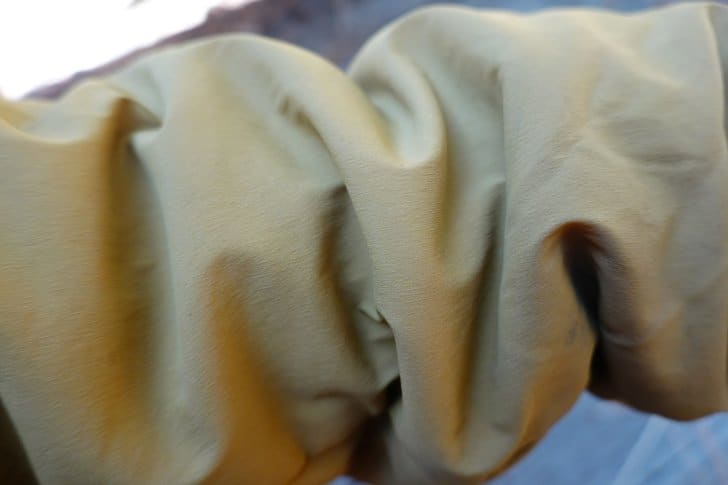
Calendering is a process by which a fabric is pressed through heated rollers. Heat and pressure effectively weld individual fibers together on one side of the fabric, reducing its porosity, increasing its downproof-ness (the propensity for insulation fibers, whether down or synthetic, to migrate through the fabric’s pore structure), increasing its water resistance, decreasing its effective thickness, reducing its tear strength, and decreasing its breathability.
On the other side of the equation is this – active insulation face fabrics are less water-resistant and wind-resistant than traditional calendered fabrics used on windshirts and puffy jackets. To what degree this is a shortcoming depends on your intended use of an active insulated jacket. It’s also worth noting that just as with other types of fabrics, active insulation face fabrics differ in terms of air permeability, breathability, water-resistance, wind-resistance, and durability. These differences spring from material and design choices made by the manufacturers.
One way to quantify a fabric’s air permeability is measuring the volume of air that can be moved through a fabric in a given amount of time (in units of CFM, or cubic feet per minute). It’s commonly measured using ASTM D737-18 (Standard Test Method for Air Permeability of Textile Fabrics). Face fabrics used on active insulating layers typically offer CFM values in the range of 20 and higher; calendered fabrics used in traditional high-loft insulating layers typically offer CFM values of less than 5 (and often, less than 1.0).
Arc’teryx touts the durability of Fortius Air 20, and we’ll certainly explore that claim.
Insulation Technology
Active insulation garments utilize more loosely bundled fibers designed to trap some heat while allowing most of the moisture from your vaporized sweat to pass through. (See our notes on porosity above). The upshot is a garment designed to keep you warm and dry during activity, but one that is usually not sufficient as a sole source of insulation while being inactive in camp – at least not in temperatures below freezing.
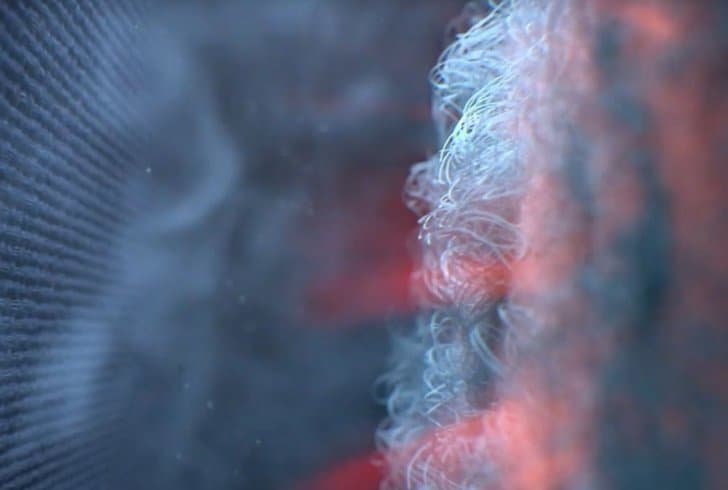
Active insulation garments are seldom insulated with down because down is poorly water-resistant. But some companies use other natural fiber insulation material, such as wool, in their active insulation garments.
Coreloft is one of Arc’teryx’s proprietary synthetic insulations. It is a loosely bundled polyester filament insulation with mixed-sized hydrophobic large-denier fibers. The benefit of large-denier fibers is that you can use a more loosely-woven (e.g., higher porosity and pore size), non-calendered face fabric in your garment without allowing insulation to escape (i.e., with individual filaments migrating through the fabric pores). In addition, large-denier fibers are more durable (resistant to breakage and collapse) than fine-denier fibers.
Coreloft Continuous and Coreloft Compact are types of Coreloft insulation. As its name implies, Coreloft Continuous can be thought of as one long fiber tangled into itself to make a “sheet” of insulation (long-staple insulation). It has a slightly higher loft (per weight) than Coreloft Compact but is less compressible.
Coreloft Compact is the short-staple version of Coreloft. It’s more compressible (in part because its fibers are highly crimped) and slightly less lofty (per weight) than Coreloft Continuous (source: Arc’teryx). For the same insulation weight, Coreloft Compact would allow for a more trim, less bulky jacket than one made of Coreloft Continuous.
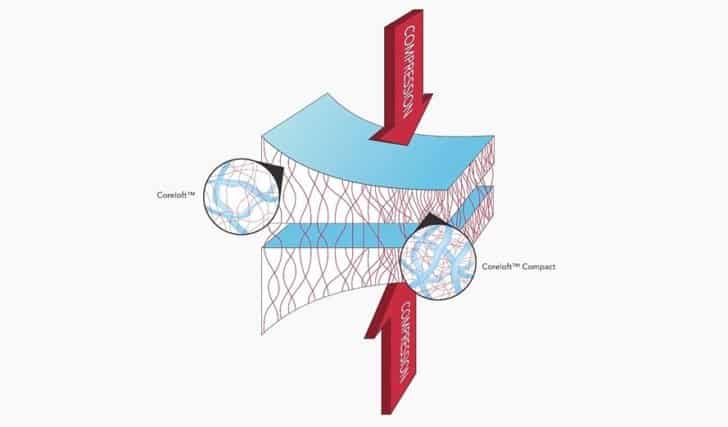
Performance Assessment
Description of Field Testing
Locations
- Rockies of Southern Wyoming and Northern Colorado
- Tahoe region of the northeastern Sierra Nevada
Dates & Seasons
- July 2019 through February 2020
Environmental Conditions
- Altitude: 6,500 ft to 12,000 ft (1,981 m to 3,657 m)
- Weather: Mostly sub-freezing winter days with light to moderate winds (5-25 mph)
How Many User-Days?
- Between the two of us, we had the Proton LT Hoody in the field for over 40 days.
Use Case Scenarios
- High-output activities: as a primary insulation layer (usually over a thin base layer) when engaged in activities that consistently elevated our heart rates to 75-100%+ of our aerobic threshold, including:
- backpacking, backcountry ski touring, and snowshoeing in hilly terrain with a backpack weighing more than 20 pounds
- trail running at a pace of 4-7 mph
- class 2-4 rock scrambling through talus and cliffs (slope angles 35 to 55 degrees)
- cross-country (Nordic) skiing in both tracked and untracked terrain
- High-abrasion activities: as a primary outer layer while:
- bushwhacking in snowy subalpine terrain (spruce, fir, pine, willow, and western laurel) through both live and dead (blowdown/beetle-kill) vegetation
- rock scrambling that regularly exposed the jacket’s face fabric to abrasion (mostly granite)
- High-movement activities: as a layer over a thin base layer for activities requiring a wide range of upper-body motion, including trail running, cross-country skiing, and rock scrambling in steep terrain
- Inclement weather: as a primary outer layer in high winds, rain, and snow
- Cold temperatures: as a primary or supplementary insulation layer in camp
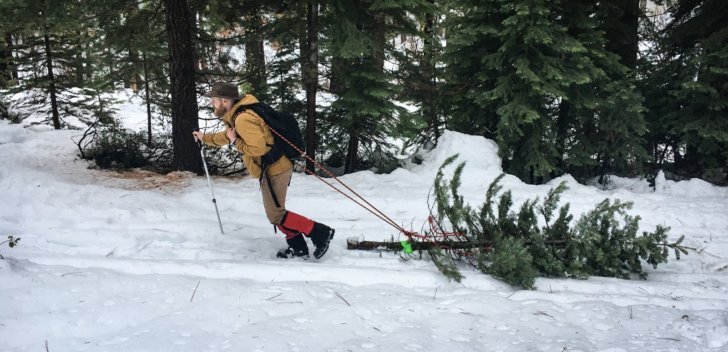
List of Performance Criteria
Because the Arc’teryx Proton LT Hoody is an active insulation jacket, we were most interested in judging its performance at the juncture of air permeability, breathability, durability, and warmth while hiking or skiing with a backpack.
As a high-end (expensive!) garment from a well-reputed manufacturer, we thought its comfort, fit, usability, and finish-quality were also worth paying attention to.
Finally, we experienced enough wind, rain, and snow while wearing this jacket to make some qualified observations on its weather resistance. So with that in mind, our performance assessment considers the following factors:
- air permeability/breathability
- durability
- warmth
- weather resistance
- fit and comfort
- usability
- finish quality
- weight
Air Permeability/Breathability
Member Exclusive
A Premium or Unlimited Membership* is required to view the rest of this article.
* A Basic Membership is required to view Member Q&A events

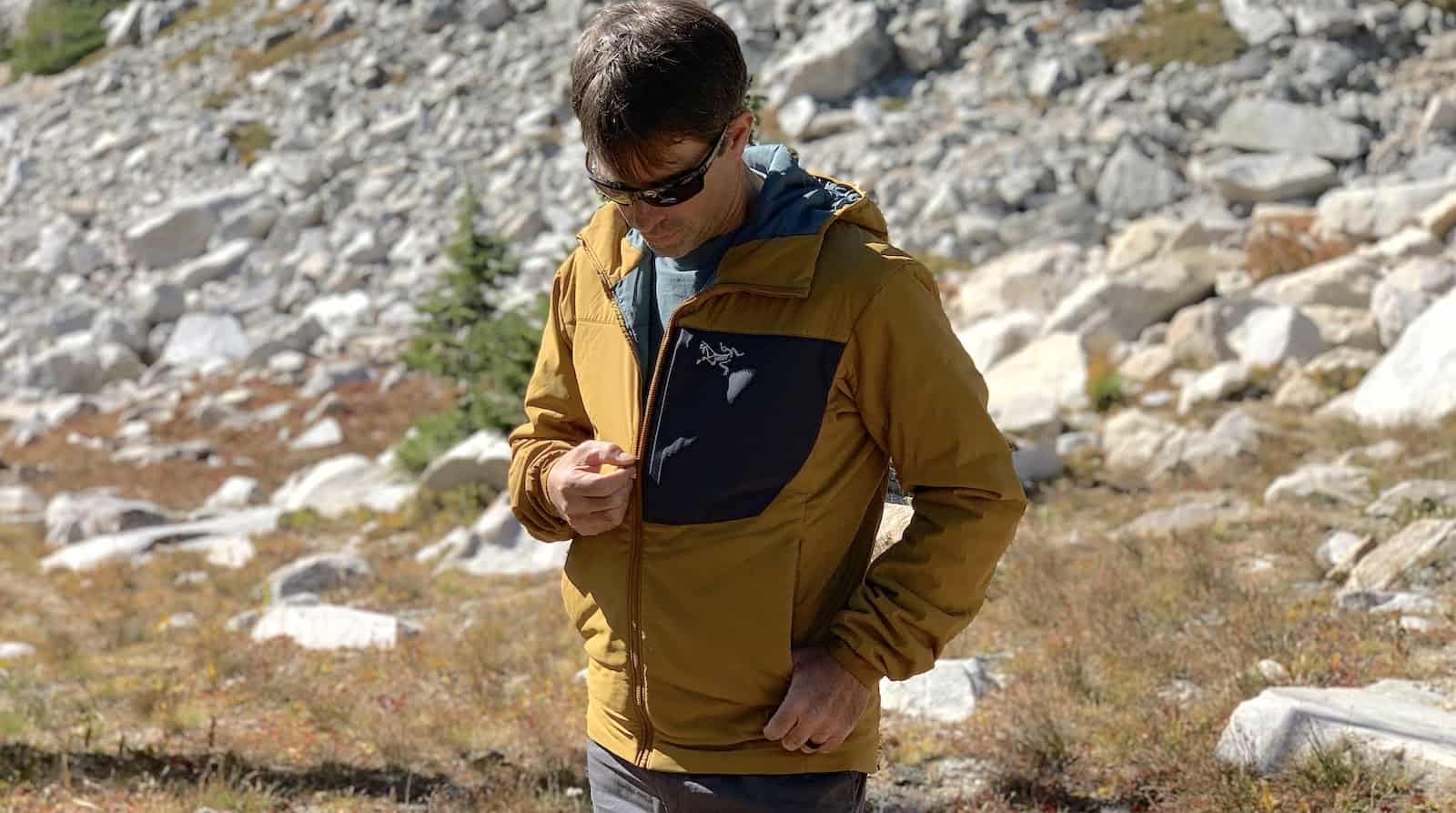


Home › Forums › Arc’teryx Proton LT Hoody Review